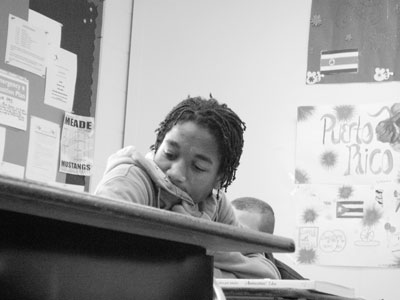All Nonfiction
- Bullying
- Books
- Academic
- Author Interviews
- Celebrity interviews
- College Articles
- College Essays
- Educator of the Year
- Heroes
- Interviews
- Memoir
- Personal Experience
- Sports
- Travel & Culture
All Opinions
- Bullying
- Current Events / Politics
- Discrimination
- Drugs / Alcohol / Smoking
- Entertainment / Celebrities
- Environment
- Love / Relationships
- Movies / Music / TV
- Pop Culture / Trends
- School / College
- Social Issues / Civics
- Spirituality / Religion
- Sports / Hobbies
All Hot Topics
- Bullying
- Community Service
- Environment
- Health
- Letters to the Editor
- Pride & Prejudice
- What Matters
- Back
Summer Guide
- Program Links
- Program Reviews
- Back
College Guide
- College Links
- College Reviews
- College Essays
- College Articles
- Back
Cutting Edge Education
Budget cuts to public schools are at an all-time high. Parents wonder why these cuts are being made since the existing funds are already small enough to impact a student’s educational opportunities. A budget cut summary posted by the Arizona Education Association has reassured parents that the cuts were made in response to student preferences. The bottom line is: Arizona students don’t want or need most of the educational services funded by the current financial plan.
According to the AEA report, after the implementation of Governor Doug Ducey’s cuts, schools will lose 80% of their funding. Ducey insists while some money will come directly from classroom expenses, most of it will come from administration, food, and transportation services.
To gain insight on the situation, we accompanied Mary Miller, a former Arizona elementary school teacher, on a visit to her old classroom.
Miller lost her teaching job several years ago due to budget cuts. We then asked for her opinion on her upheaval. “Well, it was about time! It was obvious that those brilliant kids no longer needed me. I’m just glad that Ducey is so great at listening to what people want, and allocating money where it’s really needed,” she replied, beaming.
Miller gestures to the front of the kindergarten classroom where a scraggly boy of 5, wearing an oversize white button down and baggy slacks, enthusiastically raps on a chalkboard with a teaching stick. On the board is written, “A, B, Z, D”.
“That’s Timmy,” Miller gestures. “The little tyke begged for months to play “teacher”, and he finally got his wish! Now he’s the full time teacher” she smiles widely. “And he’s the smartest one in his class. He already learned the Alphabet!” Glancing at the board, Miller chuckles. “Well, almost.”
Studies conducted by the Arizona Division of Student Performance have shown that classrooms with student-teachers rather than adults have shown a 60% increase in standardized test scores. (It’s worth noting that these particular tests were written by the students, for the students, due to lack of funds to hire a qualified panel to generate tests.) On a broader scope, these student-teacher classes have raised the average test scores in Arizona by 16%. Clearly, the financial cuts are a response to encourage the obvious trend that students no longer need qualified teachers.
In addition, reduction in spending answers the cry that students no longer need classroom supplies. Following the start of cuts in 2005, students have grown increasingly adept at finding alternatives to classroom “necessities” such as paper and pencils. This creative generation of kids is environmentally friendly. Students now utilize the playground dirt to make reusable, clay tablets for their schoolwork instead of paper. Pencils have been replaced by sharpened twigs, used to carve into the clay. According to an ADSP survey, 8 out of 10 students prefer the satisfaction of fashioning their own school supplies rather than having them merely handed over.
Studies also found that students are ecstatic about cost-cutting transportation as well. Susie Smith, a 6th grader at an Arizona middle school, proudly proclaims, “I used to ride the bus every day to school. When they cut the bus funds, though, the route no longer picked up kids in my neighborhood. Now, I’m in great shape because I run 10 miles every day to school!” Susie went on to explain that her increased physical fitness has allowed her to drop 20 pounds and complete 5 marathons by the age of 11.
A questionnaire distributed randomly to Arizona students of all ages revealed a consensus in line with Susie’s attitude about school transportation. Seventy seven percent of students were willing, nay, begging for the bus allowance to be reduced so they can spend 30 minutes or more commuting to school every day.
In summary, Ducey’s budget cuts are expected to greatly improve public schools by removing unnecessary services. It is evident that the cutbacks are the solution to the distraction of teachers, supplies, and transportation still present in the public school systems. Not catering our spending plan with this in mind would be an injustice to students.
With low funds as it is, Arizona can’t afford to allocate money where it isn’t needed.

Similar Articles
JOIN THE DISCUSSION
This article has 0 comments.
